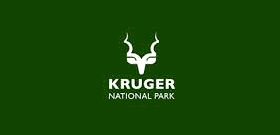 Anthrax Cases in Kruger: SANParks Reassures Visitors, Outbreak Poses Minimal Risk
Anthrax Cases in Kruger: SANParks Reassures Visitors, Outbreak Poses Minimal Risk
South African National Parks (SANParks) has issued a public statement confirming the occurrence of localized anthrax cases within Kruger National Park, a situation that aligns with the park’s natural disease cycle. This announcement, while noteworthy, brings with it a reassuring message: there is an extremely low risk to guests, and the park remains both open and safe for exploration.
Anthrax, a bacterial disease endemic to the region, surfaces sporadically almost every year—most commonly in the far northern areas of Kruger. The current outbreak primarily affects kudu and buffalo, a pattern considered typical for the ecosystem and not a cause for alarm regarding the park’s overall biodiversity. SANParks emphasizes that such outbreaks are anticipated and are managed as part of ongoing conservation and veterinary protocols.
In addressing visitor safety, SANParks has provided clear guidance to ensure peace of mind for both local and international guests. There is no risk of airborne transmission for tourists, as anthrax requires direct contact for infection. The established park rules already mitigate this risk, as visitors are required to remain inside their vehicles except at designated rest areas. For those participating in guided activities, additional precautions are in place: field guides receive specialized training in disease prevention and are prepared to keep guests safe during all excursions.
Guests are further reminded never to touch or approach animal carcasses, a standard rule in all South African reserves. This practice is particularly relevant now and serves as a simple but effective measure to avoid any potential health concerns. SANParks staff, in collaboration with veterinary and agricultural authorities, are actively monitoring the situation, and when necessary, carcasses are either removed or destroyed to prevent the spread of the bacterium.
Outbreaks of this nature are generally self-limiting, with SANParks anticipating a natural decline in cases as soon as the first summer rains arrive. The park’s ecosystem is well-adapted to managing such disease cycles, and the protocols in place allow for rapid, coordinated responses that minimize impact on both wildlife and guests.
For African tourism professionals, SANParks’ approach to managing the current anthrax cases underscores the importance of transparent communication and robust biosecurity measures. By proactively informing the public and demonstrating effective management, Kruger National Park not only protects its wildlife and visitors but also sustains the confidence of the tourism market. This is particularly crucial as travelers increasingly seek reassurance regarding health and safety when selecting safari destinations.
Importantly, SANParks has reiterated that Kruger National Park remains fully operational and that all main attractions and activities continue without interruption. The organization encourages visitors to continue experiencing one of Africa’s most celebrated wildlife destinations, highlighting the park’s longstanding commitment to guest safety and conservation excellence.
In the broader context of African tourism, this episode offers a timely reminder of the dynamic challenges that can arise in wildlife management. For those shaping travel itineraries or advising guests, it is an opportunity to emphasize the professionalism and preparedness of Africa’s leading parks, as well as the unique learning experiences available to visitors who wish to understand the realities of conservation in action.
As Kruger National Park moves forward—secure in its protocols and transparent in its communications—the message to the travel industry is clear: African safari destinations can respond to natural challenges with agility and expertise, ensuring that guest experiences remain exceptional and safe. With the support of skilled guides, dedicated veterinary teams, and informed management, Kruger continues to set the standard for responsible wildlife tourism in the region.
